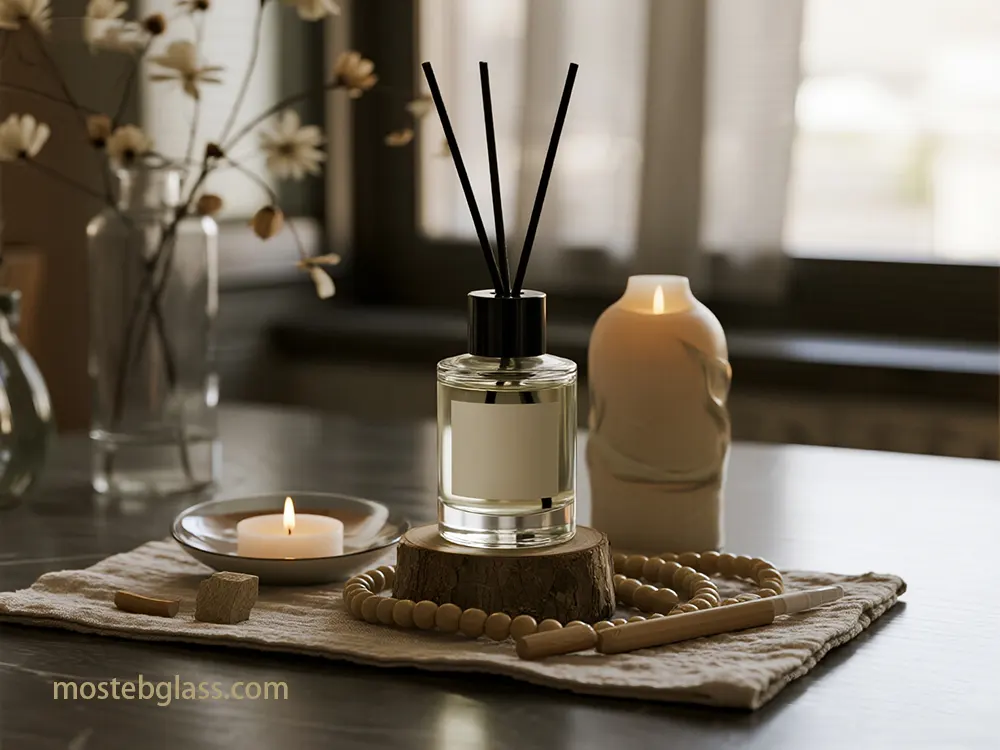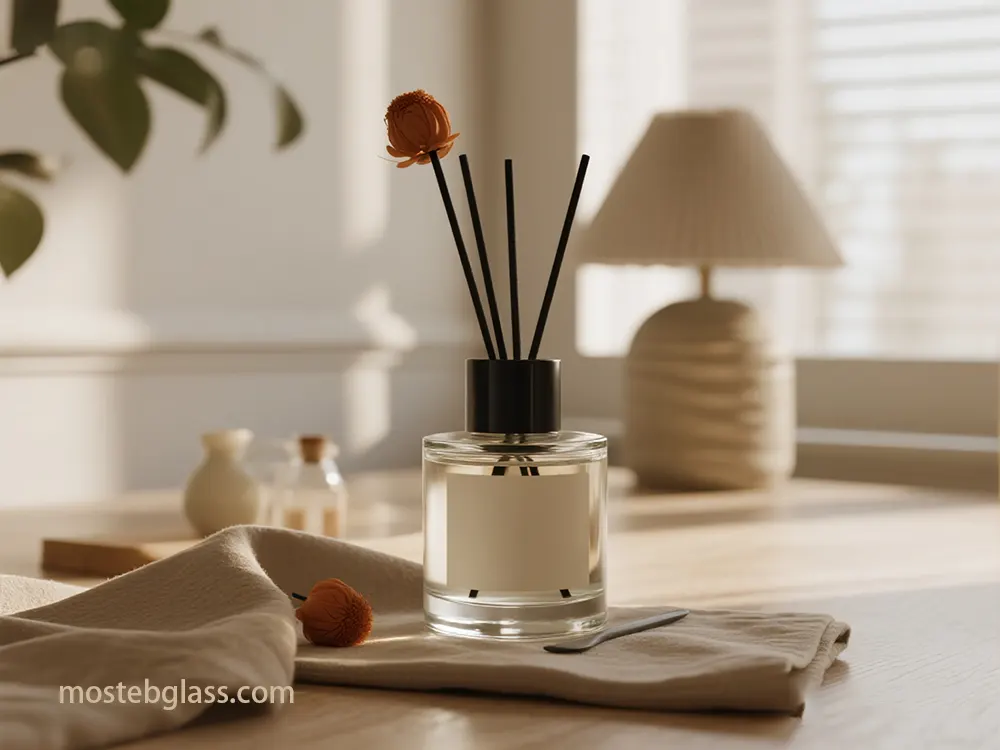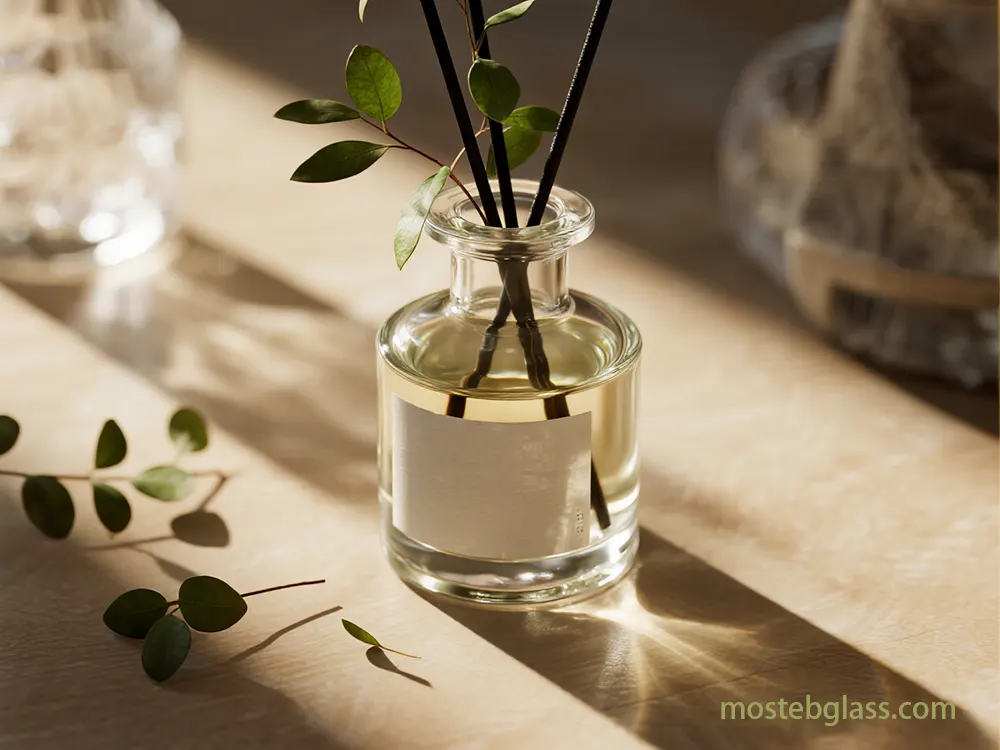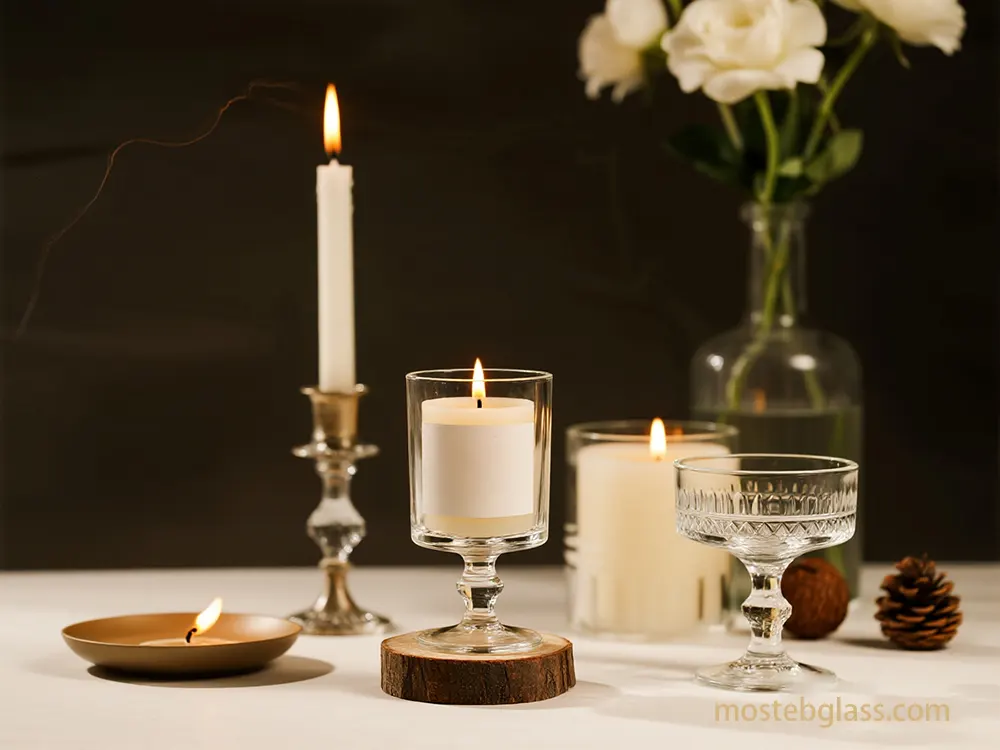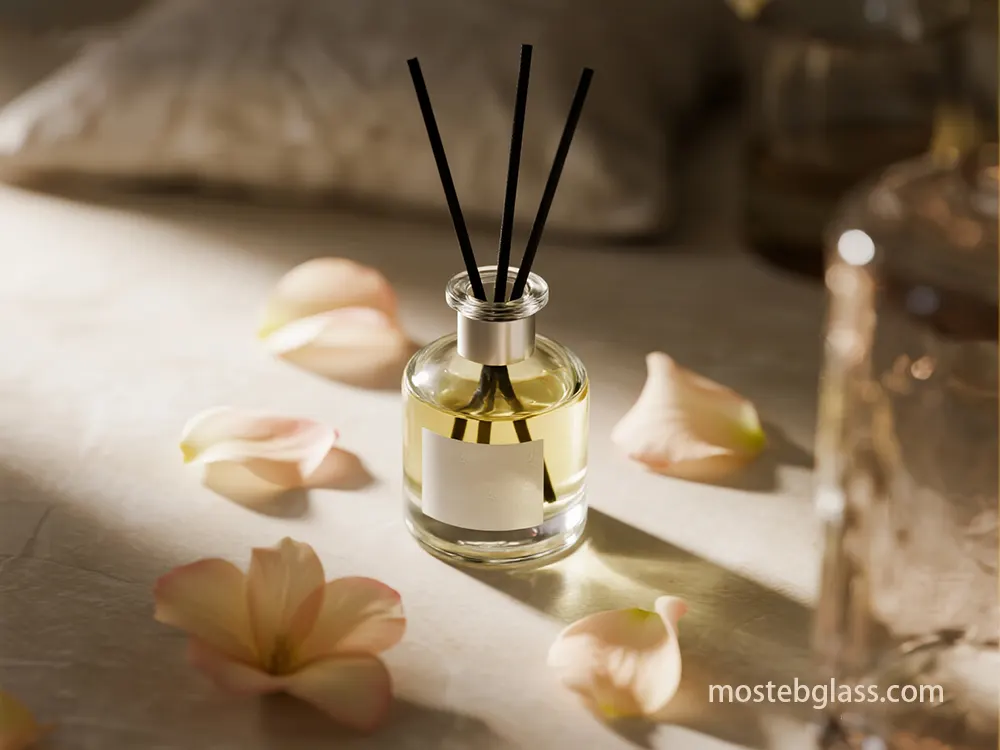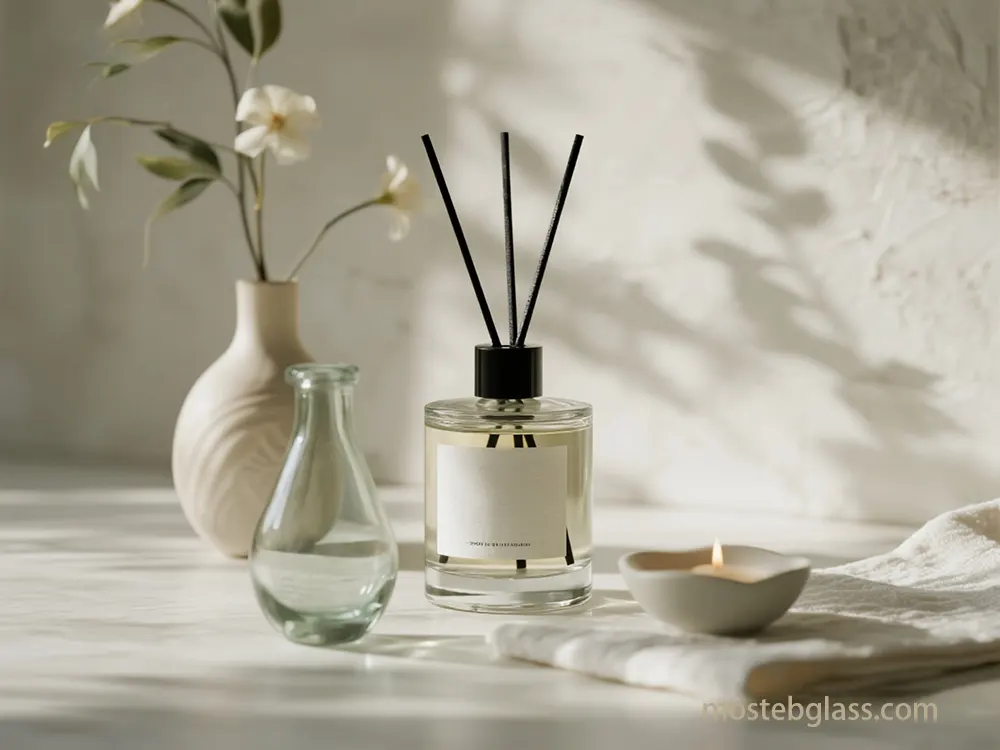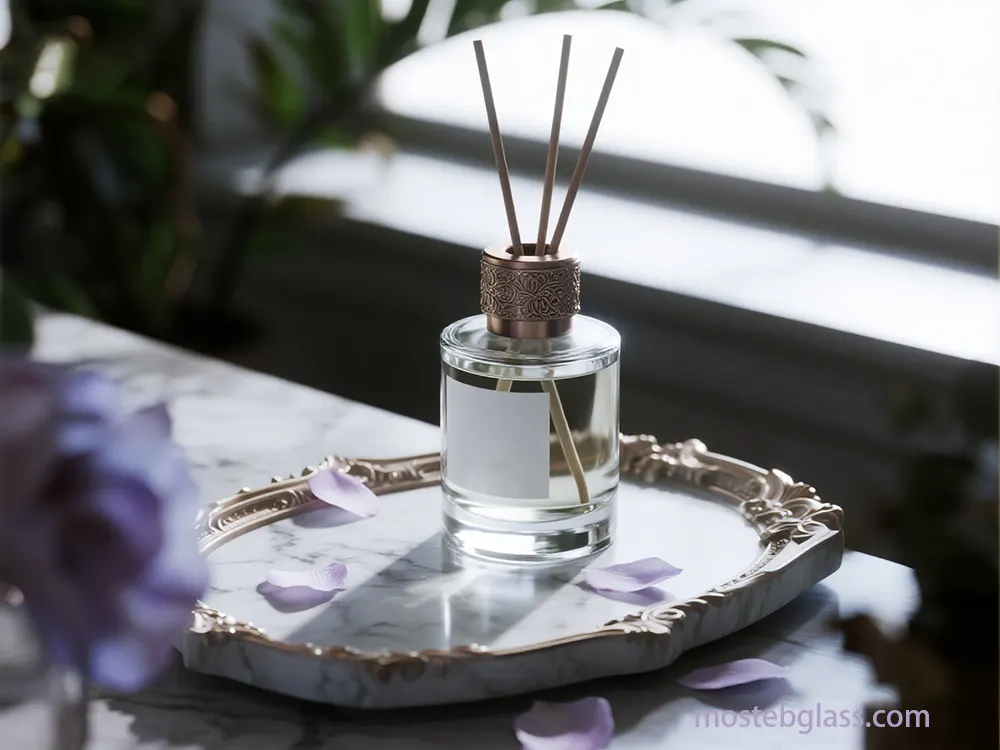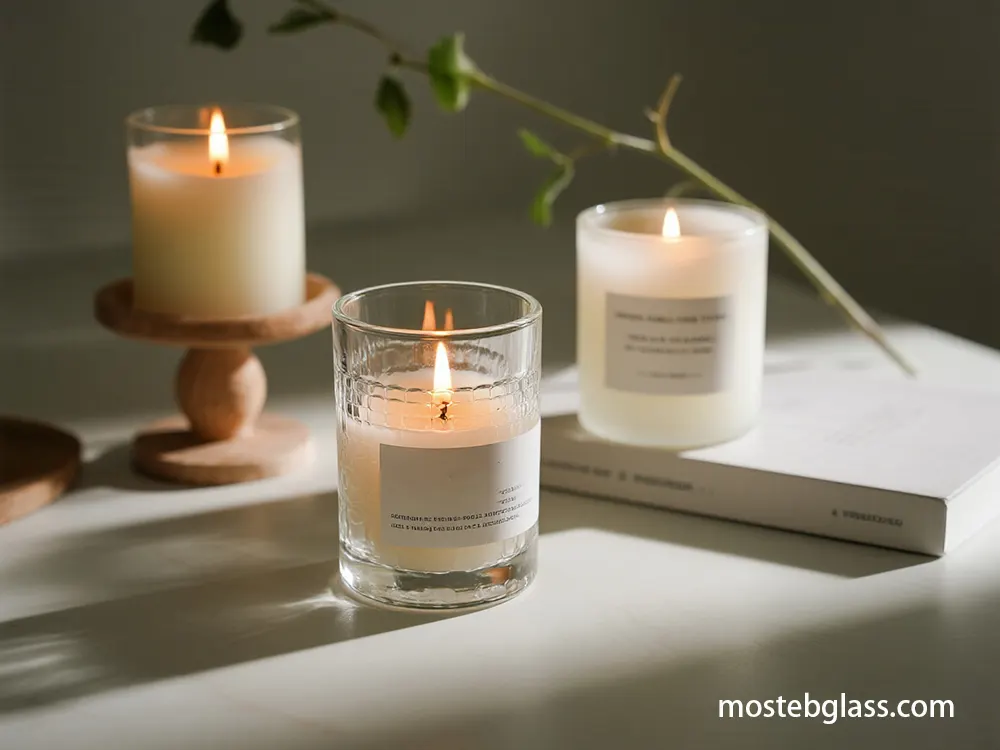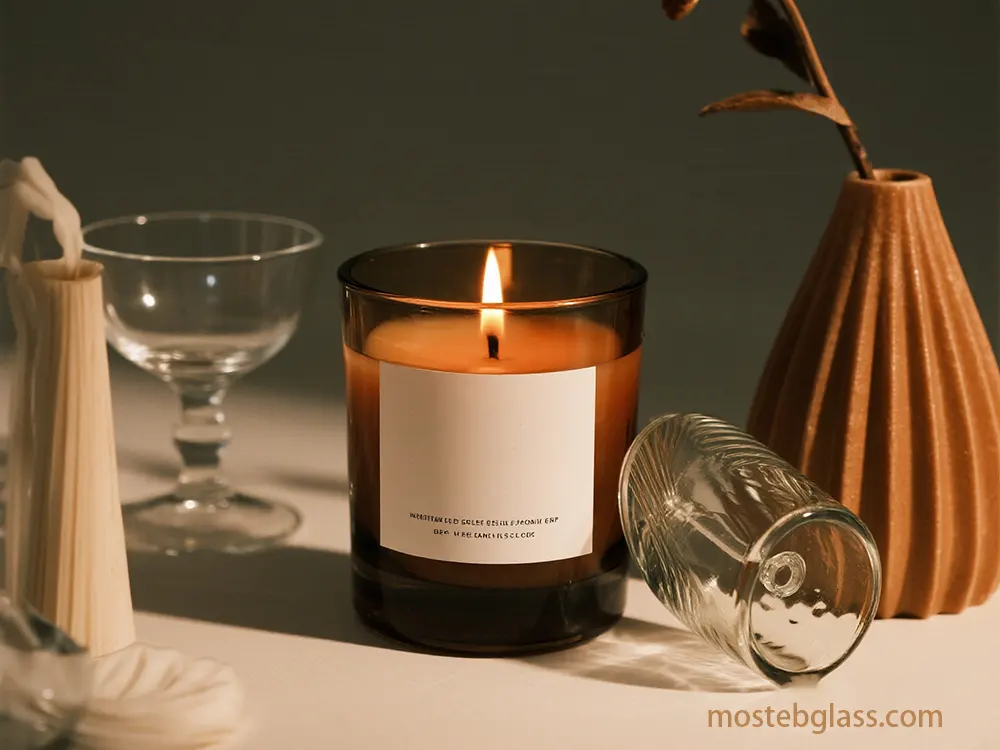Fracture pattern:
Annield Glass:
A Starburst shows the pattern.
Stored tensile energy release, fractures in many small, dull pieces (dyasing) due to a major safety facility.
Radial and Cold Fractures:
Projectal impacts create radial and concentric patterns, vaulner lines and hackles are forensically analyzed using marks.
Impact testing methods:
Charpai and Izod test:
measure the notch cruelty using a pendulum, indicating the absorbed energy.
Falling-vision test:
Except for a certain weight, the impact resistance of the coatings determines the resistance.
- The trend of packaging includes vibrant colors (deep blues, fierce red, rich emerald) and custom shapes. measures the strength of brittle grains using “R value”.
- Effect of defects and geometry: Surface defects and micro-cross-lime glass make the glass highly sensitive to mechanical stress. Nickel can cause horrific failures in strict glasses such as sulfide (NIS). Glass geometry and thickness also affect significant temperature differences and impact resistance.
- 1.3. Long use cracks stress Prolonged heat, chemical interaction with wax/aroma, and frequent thermal cycling material, causing stress to crack.
Deagal of material:
Even high -temperature materials weaken over time. Polymers are susceptible to the environmental stress cracks from candle content.
Multi-vick candle challenges:
large, multi-vick candles focuses heat, leading to high localized thermal stress. Metal surface temperature should not exceed 125 ° F (52 ° C) for metal or 140 ° F (60 ° C) for Glass/Ceramics.
2. Innovation in glass content and surface treatment
- Mostb is searching for innovations in glass compositions, tempering and coatings to increase thermal, mechanical and long -term durability. 2.1. Progress in glass compositions
- Effect of defects and geometry: Glass-Seramics:
- In these two-phase materials, a glass matrix consists of nanometers-shaped crystals. They offer near-zero thermal expansion, high fracture cruelty (sometimes> 2 MPAM), thermal shock resistance and high impact resistance. They combine transparency of glass with increased durability. 2.2. Tempering procedures
Tempering improves glass strength and safety.
- Thermal temperature: Heat the glass at your soft point makes the cooling surface compression and core tension. This makes the glass 3-5 times strong and it shatters into small, harmless pieces.
- Chemical strength (ion exchange): This “next generation” process immerses the glass in a melted salt bath, replacing small ions with older people, a much more compressed stress layer (up to 600 MPa vs 90 MPA for thermal template).
- Most benefits of getting chemical strengthening for Mostb: Promotional durability:
significantly more power and thermal shock resistance, the candle reduces the incidence of broken glass jar.
Thinness and lightness:
allows for thin, light designs.
Optical clarity:
- Protects excellent optical clarity. Scalability:
- Innovations such as Revisult FC are suitable for mass production, the time of the process is reduced from hours to minutes. Compatibility:
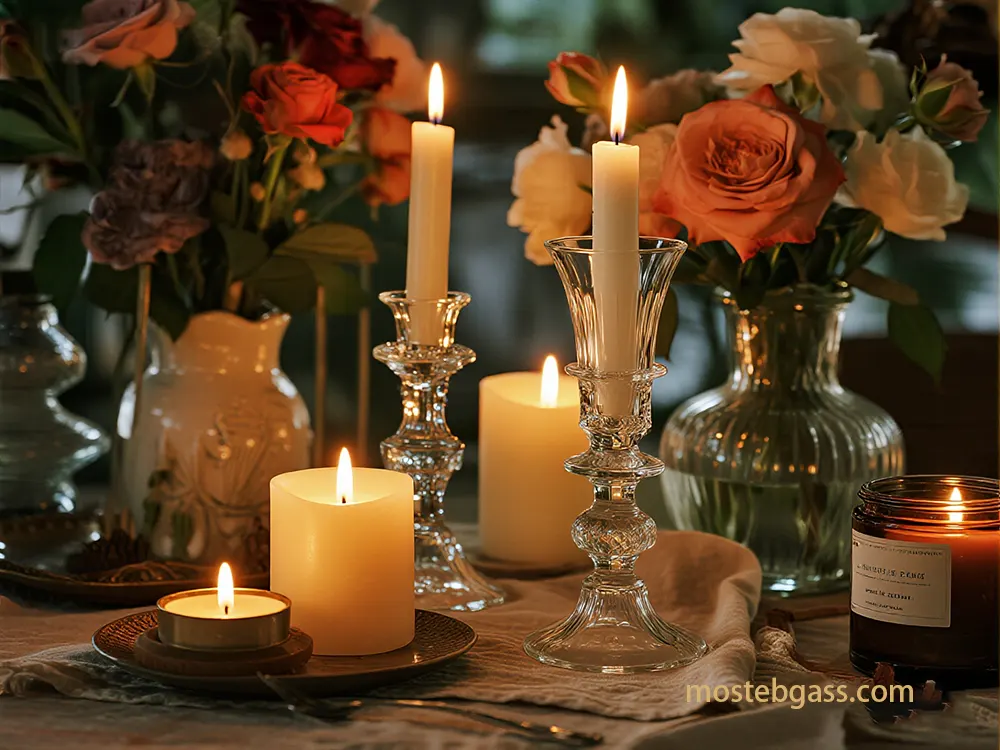
Different glass types including soda-liquor can strengthen.
2.3. protective coatings
Transparent ceramic coatings increase scratches and thermal resistance.
- The trend of packaging includes vibrant colors (deep blues, fierce red, rich emerald) and custom shapes. Silica (Sio2) and Titania (TIO2) Nanoparticles:
- Ultra-Thin, used in polymer matriarities for transparent layers. Perlucor® Transparent Ceramic (MGAL2O4):
Exceptional scratch resistance, better durability than glass, good heat conductivity and high chemical resistance provides 20–80 times better durability.
Diamond -like carbon (DLC):
Wearing resistance, high lubrication and abrasives provide resistance to wearing. Silicon nitride (SI3N4) and silicon oxinitride (sioxny):
high strength, low density, high thermal shock resistance, and excellent friction/corrosion resistance. High refracted index (HRI) coatings:
SNO2, TIO2, CEO2 offers tuable refractive indices for lighting.
- Application methods: Sol-Jail Process:
- Variety to enhance the properties of glass without changing the appearance. CVD and sputtering:
- for accurate statement of ceramic layers. Dip, spin, and spray coating:
- Simple methods for polymer and sol-jel coatings. Demonstration Promotion for MOSTEB:
- Superior scratch resistance: coatings such as Pearlukor®, DLC, and Saxney improve the stiffness of the surface.
Promoted thermal resistance:
Transparent ceramic provides high temperature resistance (> 1,000 ° C), with heat reflection coatings thermal preservation.
Hydrophobicity and easy cleaning:
- Many coatings are hydrophobic, making it easier to clean the surfaces. UV Conservation:
- Security measures against UV radiation. Chemical resistance:
- Prevents chemical interaction with candle content. Durability and Longevity:
- The surface of the overall glass enhances durability. Regulatory compliance and market trends:
- Changes for PFAS-free ceramic coatings are governed by rules. Mestabe should ensure compliance with food contact material regulations if the vessels are re -prepared. The growing ceramic coating market indicates strong supply and innovation.
3. Advanced non-vocational material for advanced security
- Mosteb is checking options for glass for better impact strength and thermal resistance, possibly eliminating the candle -broken glass jar risks. 3.1. High performance transparent polymer
- While polycarbonate (PC) is popular for clarity and heat resistance up to 130 ° C, other high temperature transparent polymers provide more performance. Inappropriate plastic such as PS, PET, PMMA and PVC should be avoided due to low heat resistance, flammability or toxic fumes. Polycarbonate (PC) Baseline:
- PC provides high optical clarity, dimensional stability, and 250x more impact resistance than glass glass. Advanced transparent polymer options for Mostb (> for 175 ° C):
Polyetherimide (PEI or Ultem):
- machine-to-do, injection-coldable, Max Contenuous operating temples 171 ° C (340 ° F). Excellent power, hardness, solvent/flame resistance. Polyphenylsulfone (PPSU or REDEL):
- Sterilizable, machineable, FDA conforms, high functioning temperature. Polysulfone (PSU):
- Further check -up warrant for high temperature performance and transparency, wax/fragrance resistance. Liquid crystalline polymer (LCP or vectra):
- injection-coldable, excellent flow, operating range up to 240 ° C (464 ° F). Polyetheretheketone (peek):
- high heat resistance, machine -to -machine, injection moldable; Transparent grades exist. Idea for polymers:
- Mosteb should consider glass infection temperature (TG), continuous use temperature (cut), chemical resistance for wax/aroma, flame retardness, mechanical properties, thermal expansion (less CTE is better), and processability (injection molding preferred). 3.2. Technical ceramic
- Technical ceramics (alumina, zirconia, cordeiate) provide extraordinary properties for high-demonstration candle vessels. Physical properties and suitability for Mosteb:
Thermal shock resistance:
caused by alumina, silicon nitride, mela, cordeiate, fused silica, and ZTA Seramix Excel due to low thermal expansion.
High temperature display:
Minds points> maintain strength and rigidity at 1500 ° C with 2000 ° C.
Mechanical strength:
high compressed power (1000–4000 MPa) and hardness.
Low thermal expansion:
Changes in temperature reduces stress significantly.
- Thermal conductivity: usually high, heat spread and thermal stress.
- Chemical stability: inorganic, non-metal, resistant to oxidation and corrosion.
- Density: Low (2-6 g/cc), lighter than steel.
- Porcity: Usually gas-tang, but controlled porcity can manage thermal stress.
- Manufacturing technology and adaptation for Mosteb: Methods of formation:
throwing, grouting (slip casting for complex shapes), or pressure.
Firing process:
High temperature firing after bisk firing for hardness and heat resistance (1200–1300 ° C).
Glazing:
It is necessary for aesthetics (shiny, mats, gradients) and improves surface quality, power and chemical resistance. By spraying, needle, brushing or printing.
- Adaptation: Size, color, glass cover, pattern (hand-painting, screen printing, dirals, digital printing), comprehensive options for lid type and size.
- Beauty and Design Ideas: Ceramic carries offer diverse styles, from rustic to minimal, serve as focal points.
- Market trends and economic factors: The growing candle sees the market ceramic jar as an important section, with a change towards the durable material. Technical ceramic has high production costs, their better performance justifies investment for premium mostab products.
- 3.3. Transparent mixed material Transparent composite provide a unique mixture of transparency and enhanced impact resistance.
- Material Structure and Properties: Glass/Glass-Ceramic Matrix Composite:
- Still for transparency, close-zero thermal expansion, high fracture cruelty, thermal shock, and effect resistance. Polymer Matrix Composite (PMCS):
- Organic polymer fractures with fiber improve cruelty, strength and hardness. Aramid Nanofibers (ANFS):
- Spread into polymers for transparent nanocamposities with better mechanical properties and high transparency. NACRE-Inspired Composite:
The thermal insulation and impact resistance increases while maintaining transparency.
- Refractive index matching: Important for transparency, matching fiber and matrix reduces light scattering.
- E-Glass and S-Glass Fiber Composite: E-glass with thermoset resins can achieve high transparency (up to 88%) by matching chromatic spread. Glass-glass provides high hardness and easy manufacturing.
- Manufacturing Process: Real Transfer Molding (RTM) and Light RTM (L-RTM):
- Suitable for transparent glass fiber-rebellted polymer (TGFRPS). Vacuum-assisted resin transfer molding (Vartm):
Silavaya manufactures a continuous glass fiber composite with epoxy resins.
Hot-dressing:
Thermosetting glass-fiber reduces surface defects in transparent composite (TGFTC).
You can make molds for various
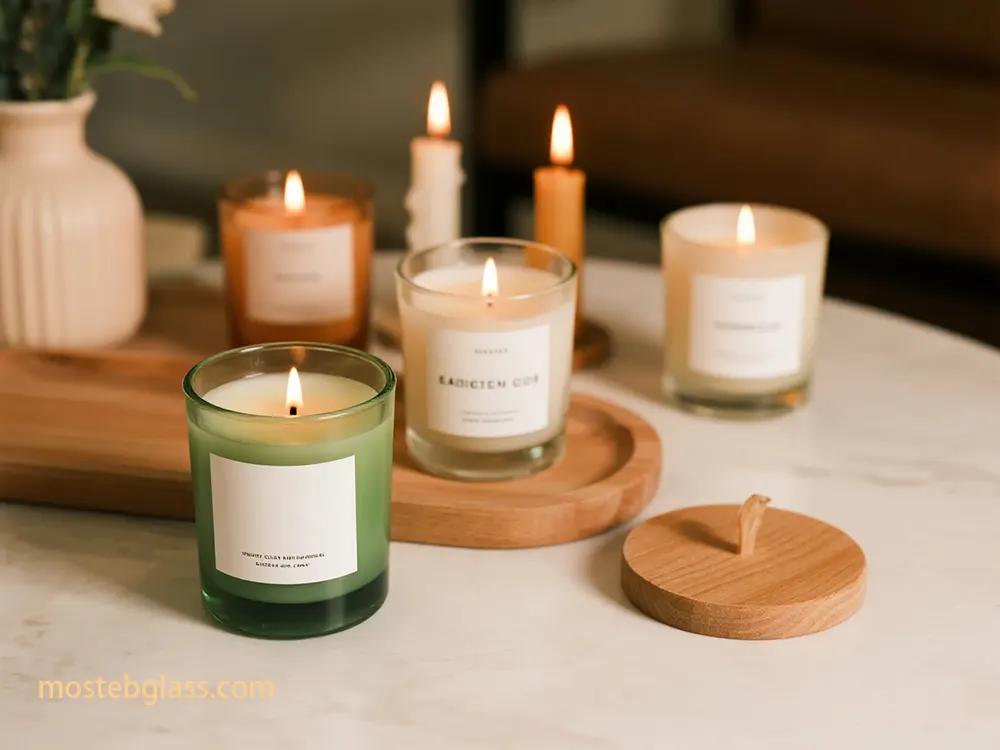
overall manufacturing techniques.
Performance and challenges for MOSTEB:
High Impact Power:
- Customized Glass Fiber Composite can reach 86.3 KJ/M Gress. Optical transparency:
- Light transmission is obtained up to 88%. UV stability:
- Better resistance against hygrostral aging compared to UV aging; Increased with pigmentation and inhibitors. Optical deformation:
- surface irregularities can cause deformation, can be addressed by tearing. Industrial Skalibility:
- Challenging with solutions such as e-glass fibers in RI-Tubanable Epoxy resin. Dosual mitigation:
- chromatic aberrations and defects can be reduced by matching colored upset and customized infusion processes. 4. Performance Prioritization, Cost-Effectiveness, and Sustainability
Mosteb’s material selection must balance performance, cost, and sustainability.
- 4.1. Performance priority The ideal material depends on the product line and use:
- Maximum temperature resistance: For long-burning/multi-vex candles, there are borosilicate glass, technical ceramic, or LCP paramount. The maximum surface temperature for glass/ceramic should not exceed 140 ° F (60 ° C).
- Effect strength: chemically strong glass, technical ceramic (zirconia-seakkar alumina), or transparent composes provide better impact resistance.
- A special candle jar is capable of meeting the factory brands to meet the demand for permanent products and embrace circular economy principles. Scratch resistance: chemically strong glass and ceramic coatings enhance surface aesthetics for premium products.
4.2. Manufacturing cost effectiveness
- The cost affects the price and market competition of the product. Cost of material: Soda-Lime Glass is the least expensive. Technical ceramic and high-demonstration polymers are generally higher.
- Production processes: well installed but energy-intensive. Chemical strong costs with innovations are decreasing.
- Energy-intensive formation and high temperature firing. Polymer:
- Injection molding is efficient, but high-demonstration polymers have high content/processing costs. Composite:
- Processes can be complicated, but low-cost e-glass fibers help in cost-effectiveness. High-volume, coherent production is important. Chemical strength is improving.
- Overall market: Candle jar market is growing. Cost cost analysis includes wax, wicks, aroma, jars, lids, labels, shipping and labor.
4.3. Sustainability
Stability is an increasing anxiety.
Life cycle evaluation (LCA):
Mostab should operate LCAS (ISO 14040/14044), covering the “Cradle to Grave” effects including transport.
- Major impact categories: LCAS evaluate global warming capacity, energy demand, human health, ecosystem and resource deficiency.
- Recycling effect: Recycling packaging significantly reduces emissions (eg, 46%for metal, 48%for glass). The glass is endless recycled.
- Ensure uniform glass thickness to prevent strain, warm spots, and cracking. Inconsistent thickness causes choppy warmth distribution and failure. In polymer bottles, weight loss can have less environmental effects than glass. PETs (RPET) made PECIL compared to glass have more environmental stability. PLAs such as offer low carbon footprints, but have low heat resistance.
- Consumer preferences: Consumers pay more for rapid environmentally friendly products and prefer recurrect candle jars.
Protered and durable by design (SSBD):
Mobteb can adopt SSBD structure, using multi-post decision analysis (MCDA) for transparent material selection.
5. Beauty and sensory protection in material innovations
It is important to integrate new materials while maintaining the beauty appeal and sensory experience of the mostb.
- Kevyitä, kestäviä ja hyvin kierrätettäviä, metallitynnyrit (alumiini, teräspinta) tarjoavat modernin, minimalistisen tai kaupallisen ulkonäön, erityisen matkakuumeisille kynttilöille tai korkeille sulamispisteille lämpöjohtavuuden vuoksi. Visual appeal operates consumer choice.
- Keramiikka: Surface Finnish:
- Glazing options for ceramic (shiny, matte, gradients, crade) offer wide aesthetic possibilities. Ceramic coatings can provide hydrophobic, sleek, shiny surface. Color and adaptation:
- Technical ceramic provides extensive adaptation in color, glass cover and pattern, including digital printing for high-definition design. Custom color match is available. Design integration:
- Simple methods for polymer and sol-jel coatings. 5.2. Sensory experience
- Sensory experience includes flame, light proliferation and fragrance throw. Flame appearance and light proliferation:
material surface finish and refractive index effect flame appearance and light proliferation. The refractory index of the material affects how the light from the flame is folded and believed. Material or material with controlled spread can create a soft, more invited glow.
Smell throw:
- container material throwing fragrance. The tin rapidly destroys heat, accelerates the aroma but potentially disintegrates soon. The glass maintains heat for a long time, supporting a more continuous aroma.The harmony with high thermal conductivity (some ceramic, metal) can offer early initial odor releases, while low conductivity materials (thick glass, some polymers) can provide a longer experience. 5.3. Design requirements for different candle types and jar size
- Vasel design should adapt to safety and performance for specific candle types. Multi-vick and large candles:
- introduce important thermal challenges. Place of Material:
- Technical ceramic mainstream options such as high borosilicate glass (low expansion) and cordiaite are options. Wall thickness and geometry:
- Thick walls maintain heat for a long time for a stable melted pool. 2: 1 or 3: 2 diameter-to-heocy ratio is recommended for wide tins. Glass should be thick and smooth. V V Placement and Number:
- Multi-vick containers should be at least 3.5 inches in diameter. Thermal management:
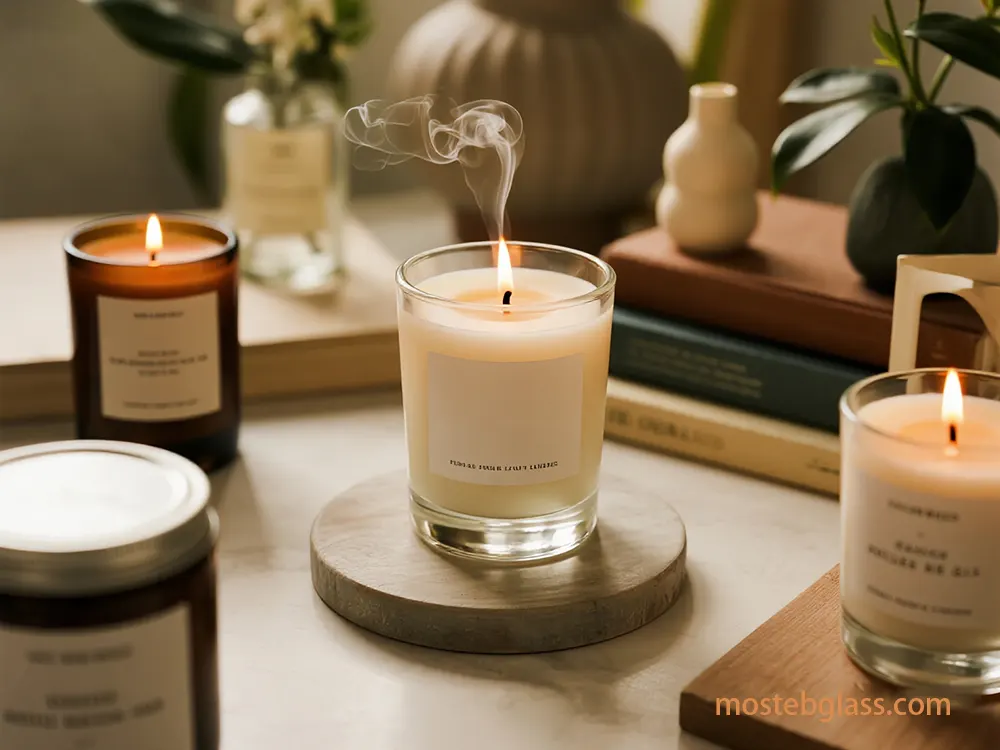
Proper airflow, vent, or lift lid rims are important.
Fea Modeling:
Important for modeling thermal stress, identifying important points, and evaluating designs.
Long -term burning candles:
- for accurate statement of ceramic layers. Vik Centering:
- Proper Wick Center, prevents uneven summer buildup, reduces cracking risk. By careful considering aesthetics, sensory factors, performance and stability, the mostb can innovate with advanced materials without compromising consumer experience, ensuring safe and delightful candle jars.
- Wholesale Diffuser Bottles Wholesale Glass Vases
- Latest Insights Case Study: Overcoming Challenges in Large Glass Diffuser Bottles Manufacturing
Custom Glass Christmas Ornaments – Driving Brand Differentiation in Seasonal Markets
Customization in Glass Ornaments: Unlocking Opportunities for Differentiated Branding
- Case Study: Custom Glass Unique Diffuser Bottles Manufacturing for a Spain Brand Large Diffuser Bottles: Redefining Luxury Home Fragrance Packaging
- Sustainability in Glass Flower Vase Manufacturing: Global Market Trends Comment
Submit your opinion
get a free quote
- Complete our quote request form or email us at to receive a customized quote from our product specialists.
- Company Phone/Whatsapp
- Select a product glass candle jars
- Reed Diffuser Bottle glass vases
- Quantity contact our Product Expert
- Send us a message freely if you have any questions. We’ll get back to you within 30 minutes via email at , and we’ll adhere to the privacy policy to protect your information.
- full name email adress
- Please provide us with the capacity, shape, color, and quantity of the glass containers you require. Alsoplease feel free to share any other details or specific requirements to help us better understand yourproject. Tell us your requirements, such as capacity, quantity, customization, etc.
By careful considering aesthetics, sensory factors, performance and stability, the mostb can innovate with advanced materials without compromising consumer experience, ensuring safe and delightful candle jars.




